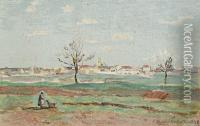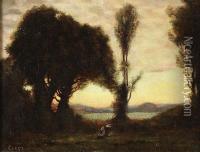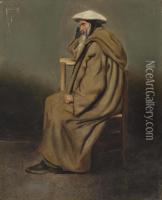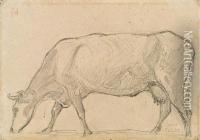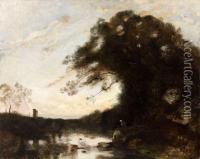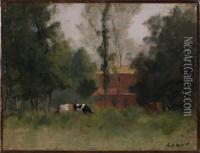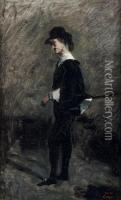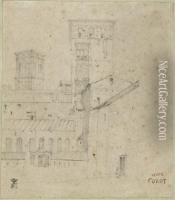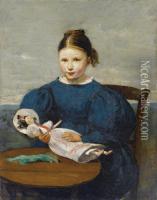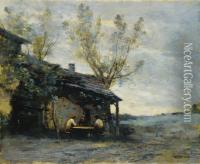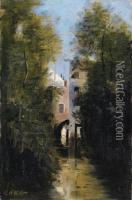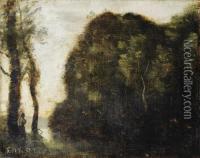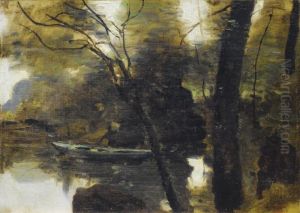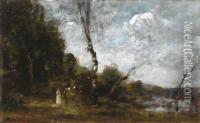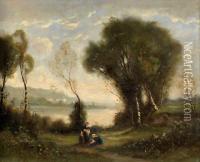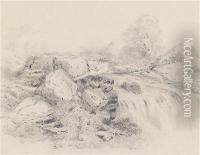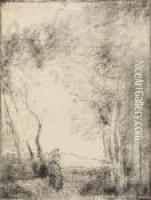Jean-Baptiste-Camille Corot Paintings
Jean-Baptiste-Camille Corot was a leading French landscape painter of the 19th century, who is also considered a pivotal figure in the pre-Impressionist movement. Born on July 16, 1796, in Paris, Corot was the son of a cloth merchant and a milliner. Despite the early interest in art, he followed his family's wishes and worked in the textile business for a period before dedicating himself to painting.
Corot received academic training at the École des Beaux-Arts, but he was greatly influenced by the outdoor painting of the Barbizon School. He traveled extensively throughout France and also visited Italy on several occasions, where he was inspired by the landscape and the work of the Old Masters, particularly the poetic interpretation of nature he observed in the work of 17th-century classical landscape painters like Claude Lorrain.
Corot's style evolved from a traditional, detailed approach to a looser, more atmospheric treatment of light and shadow, which would later be influential among Impressionist painters. He was known for his ability to capture the transient effects of light in nature, and his work often conveyed a sense of harmony and tranquility. Corot's landscapes usually feature silvery tones and a soft, fluid application of paint, characteristics that became hallmarks of his work.
In addition to landscapes, Corot also painted a significant number of figures and was proficient in portraiture. However, it was his poetic interpretation of nature that had a profound impact on the generations of artists that followed. He never married and lived modestly, despite his success as an artist.
Corot was prolific throughout his career, and his work was well-received by both critics and the public. He was a generous mentor to younger artists and is credited with influencing the work of Impressionists such as Claude Monet and Camille Pissarro. Although Corot achieved considerable success during his lifetime, his reputation continued to grow after his death on February 22, 1875, in Paris. Today, Corot is remembered as a key figure in the transition from neoclassical landscape painting to the more subjective and emotional approach that characterized Impressionism.
